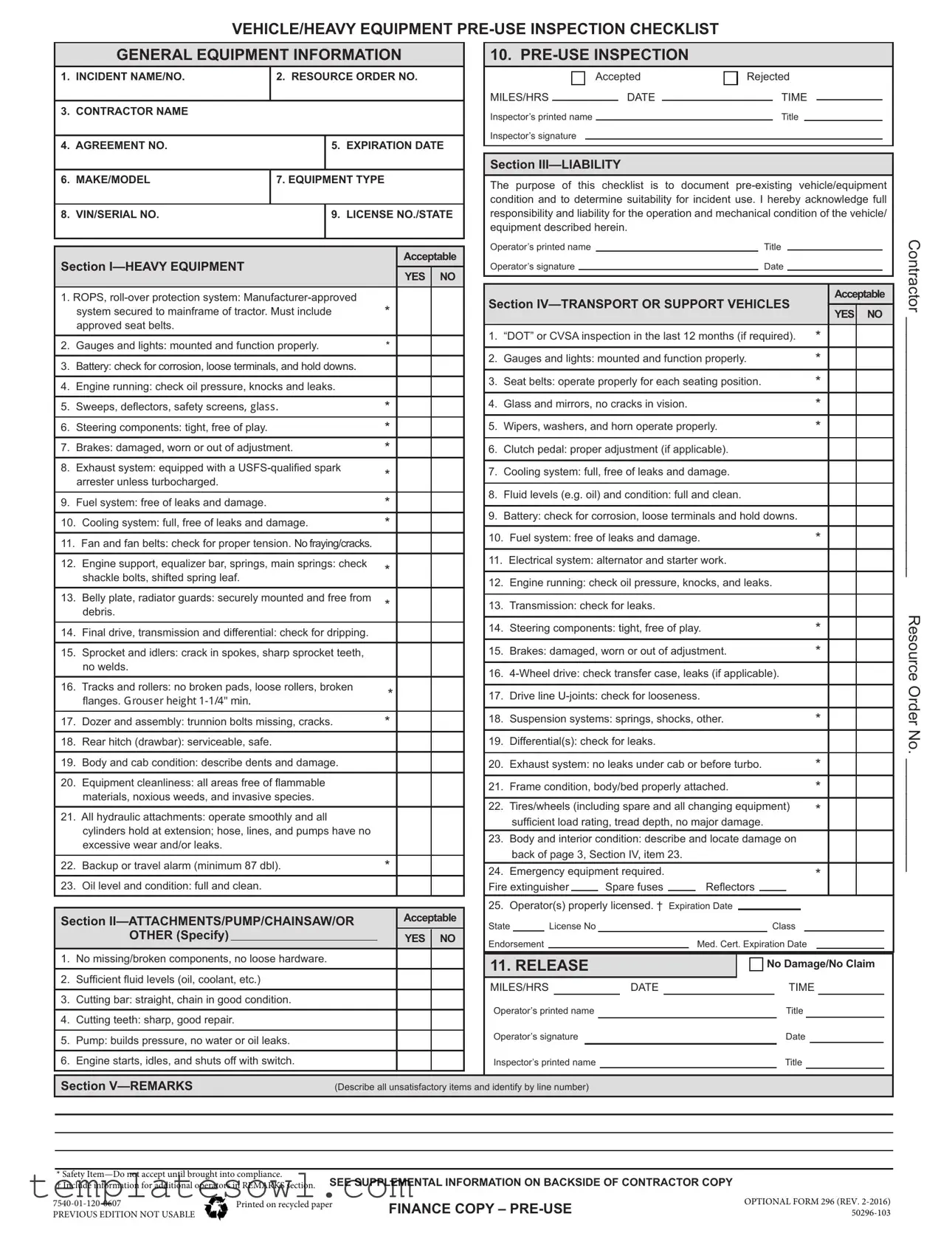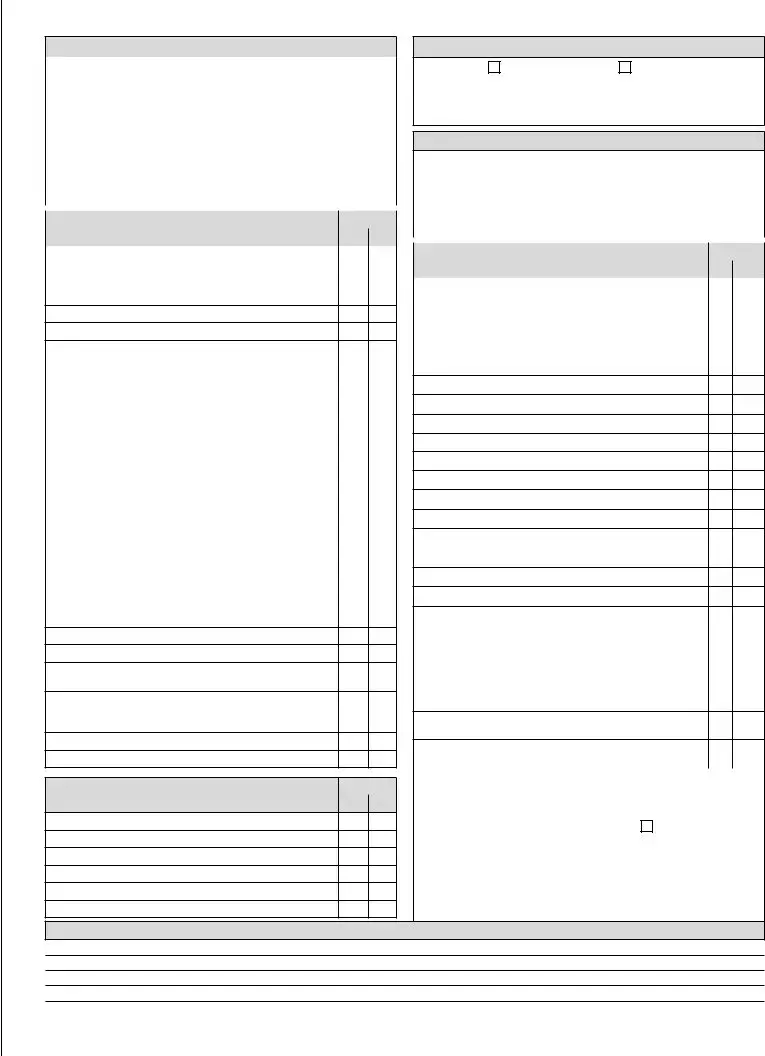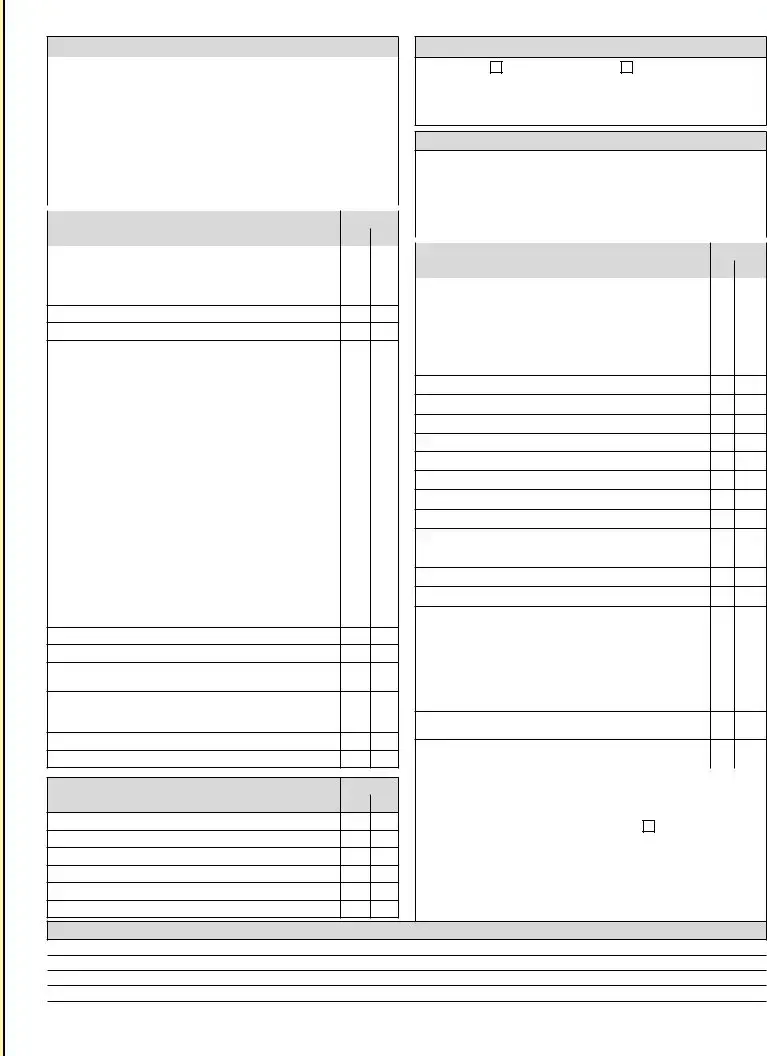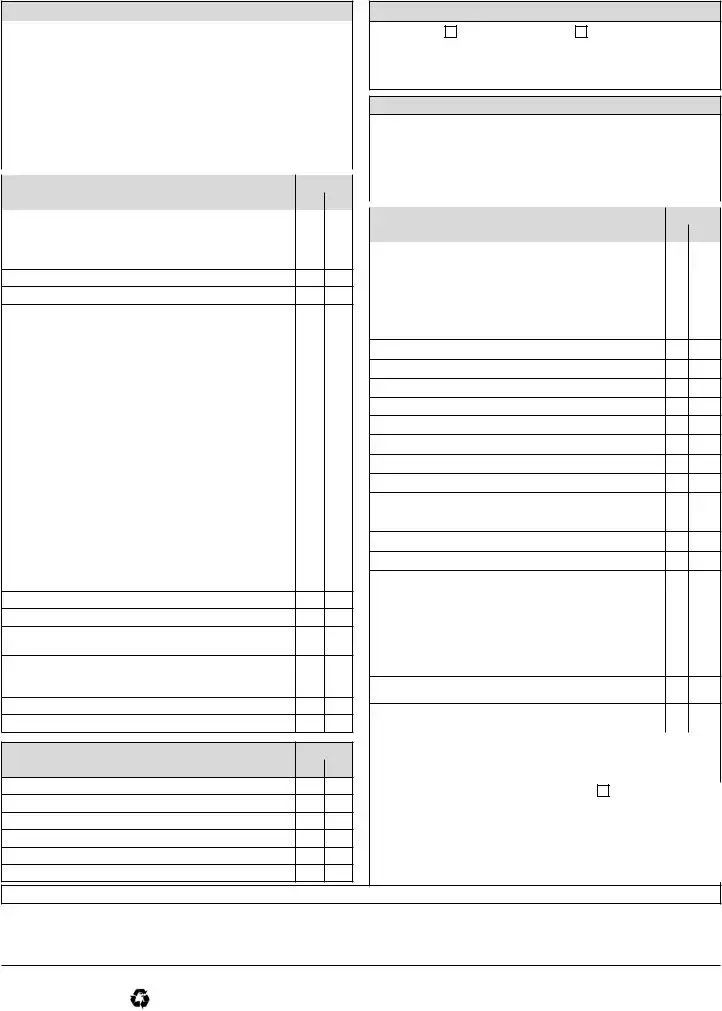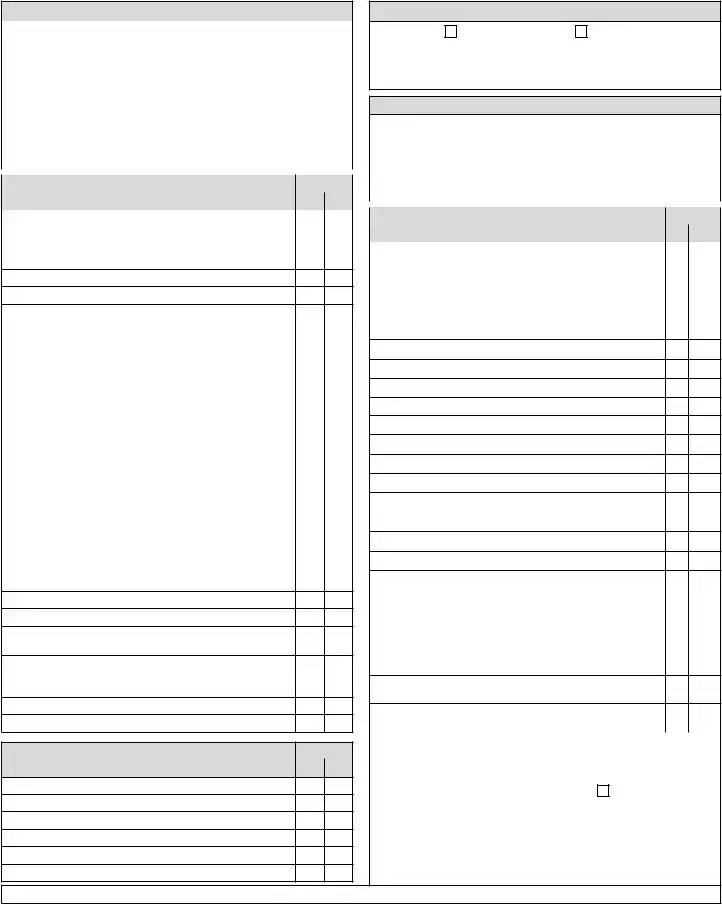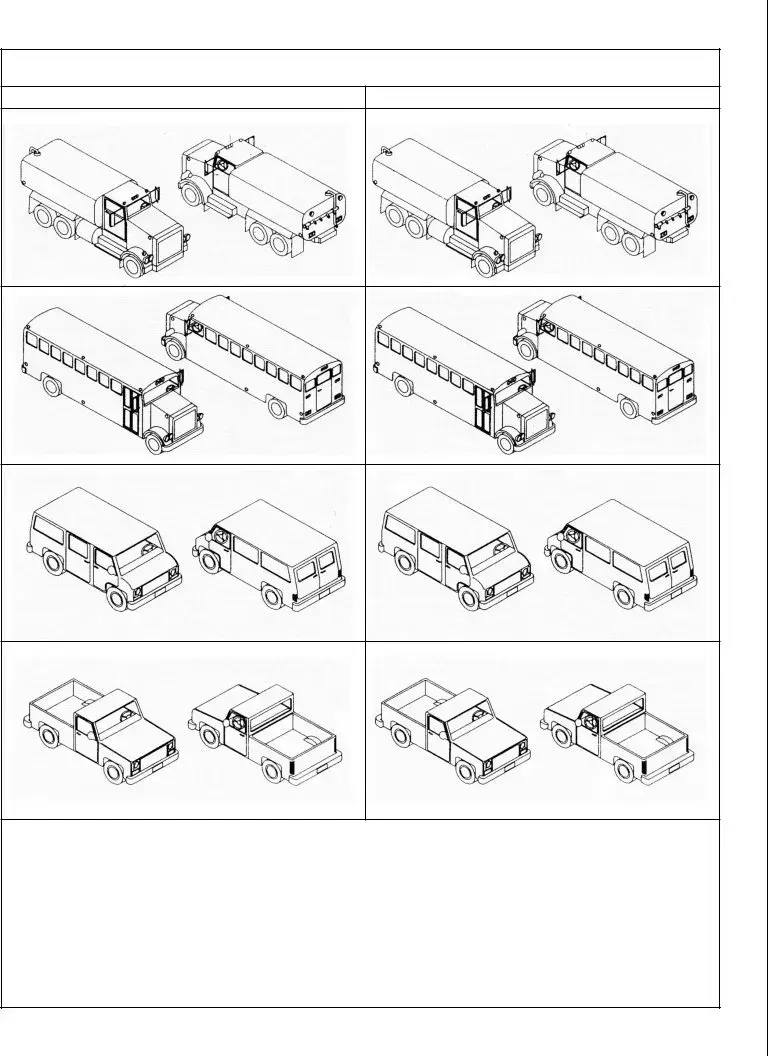What is the purpose of the 296 form?
The 296 form is designed to document the pre-use condition of vehicles and heavy equipment. It aims to ensure that equipment is suitable for safe operation before being used in any incidents or work. This form captures important details about equipment safety features, operational status, and compliance with safety regulations.
Who is responsible for filling out the 296 form?
The form must be completed by an inspector who evaluates the condition of the vehicle or equipment. Additionally, the operator of the equipment must also sign the form, acknowledging responsibility for its operational condition. Both roles are crucial in ensuring accountability and safety standards are met.
What information must be included in the General Equipment Information section?
This section requires details such as the incident name and number, resource order number, contractor name, agreement number, expiration date, make/model of the equipment, equipment type, VIN or serial number, and license information. Failing to provide this information may lead to delays or complications in equipment use.
What are some key safety checks performed on heavy equipment?
Key checks include ensuring the roll-over protection system is secure, verifying that gauges and lights function properly, and inspecting the brakes, steering components, and fuel system for leaks or damage. The inspection also covers the hydraulic attachments and overall cleanliness of the equipment to avoid fire hazards or contamination.
What should an operator do if the equipment does not pass the inspection?
If the equipment does not meet the necessary safety standards, it should not be accepted for use. The inspector will identify unsatisfactory items on the form, and these must be addressed and brought into compliance before re-evaluation. The form contains specific areas for remarks related to these issues.
How often should the 296 form be completed?
The pre-use inspection should be completed every time the equipment is prepared for operation, especially if it has been idle or after any repairs or maintenance. Additionally, for transport or support vehicles, compliance with DOT or CVSA inspection requirements is necessary within the last 12 months.
What happens if an inspector finds a safety item unfit for service?
If a safety issue is identified, the inspector must reject the equipment until it is corrected. Items marked with an asterisk (*) in the checklist indicate critical safety concerns that must be resolved before the equipment can be deemed safe for operational use. This is a vital step in mitigating risks associated with equipment malfunction during operations.
